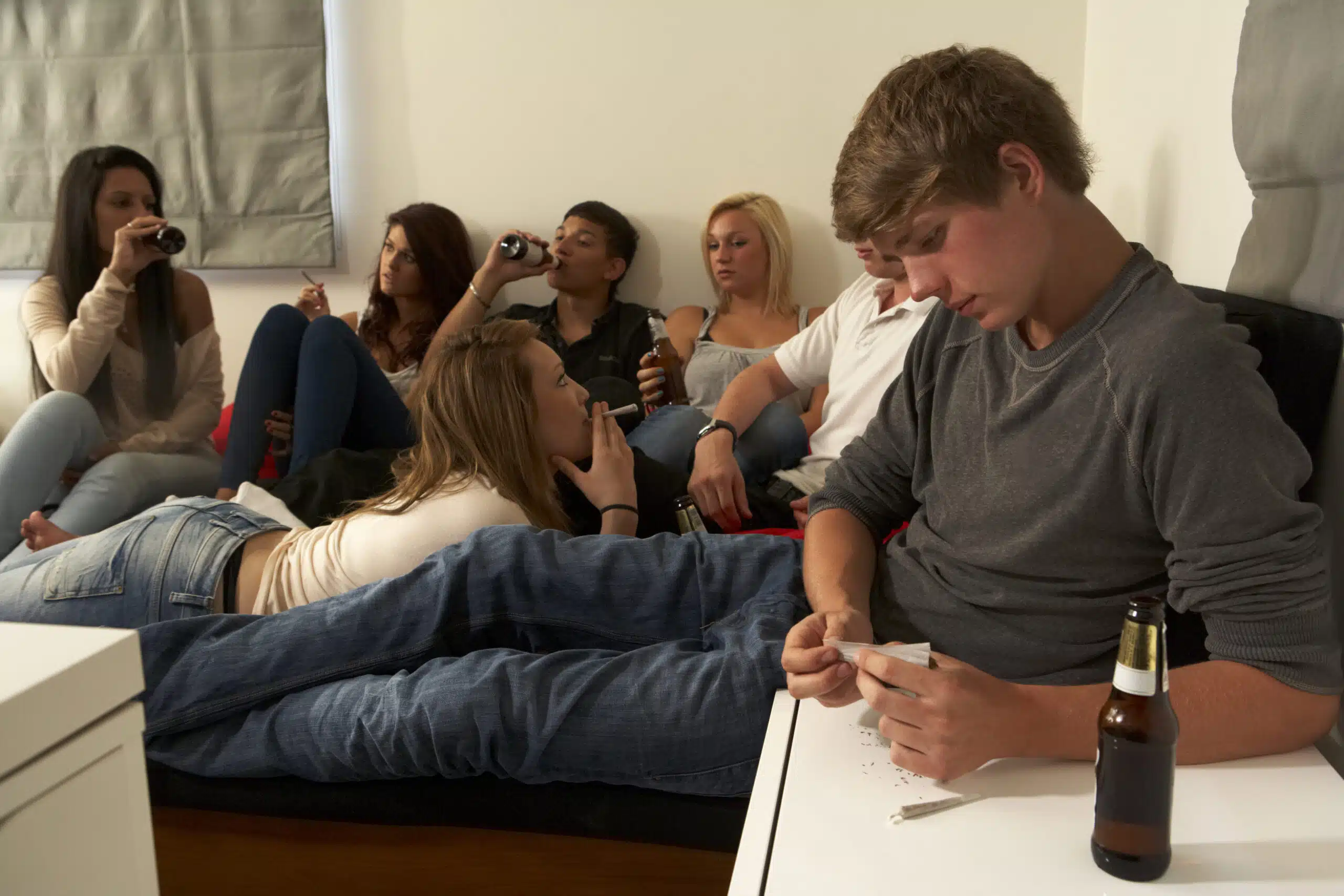
3 Ways to Explore Intrusive Thoughts with Your Teen
We all have thoughts or ideas that enter our minds that are stressful, distressing, or unpleasant. In most cases, when this occurs, we can recognize such thoughts as meaningless, and they disappear as quickly as they appeared, never to reappear. For someone who lives with frequent, recurring intrusive thoughts, the ability to push them aside is different. For some, worrisome and unwanted thoughts occur daily (or several times each day), leading to difficulties with many aspects of their daily lives.
Understanding Intrusive Thoughts
Intrusive thoughts are wanted ideas and images that are often unpleasant and seem to occur out of nowhere. They can be aggressive, violent, sexual, or fear-inducing. Although intrusive thoughts are a part of life for everyone at some point, they generally do not have any meaning and present minimal impact as long as the individual can recognize they are only thoughts and the individual does not have the desire to act on them.
But, if your teen experiences frequent and recurring thoughts that cause notable concern and worry or they interfere with their ability to actively engage in their day-to-day obligations and responsibilities, it may be important to reach out to their primary care provider or a specialist here at Beachside in Los Angeles.
Types of intrusive thoughts
As mentioned previously, there are many types of intrusive thoughts. Examples of ideas and images that are often the subject of intrusive thoughts include:
- Acting or saying something wrong in a public setting (public embarrassment)
- Thoughts about infection, germs, or contamination
- Doubts about completing tasks properly or failing to complete them
- Sexual acts or situations
- Thoughts about violence, aggression, or causing harm to others
- Blasphemy, religion, or immorality
Some teens may have intrusive thoughts that are not part of any of the above categories. When someone experiences intrusive thoughts, it is natural to worry about what they mean. Often, they do not have a particular meaning, but it is still common for the individual to want to keep them a secret or feel shame or guilt about their thoughts. If your teen’s intrusive thoughts involve hurting themselves or someone else, it is a reason to seek help right away.
Is there something that Causes Intrusive Thoughts?
There are two primary reasons intrusive thoughts occur. In some instances, they are simply random ideas that come and go from the brain, leaving little lasting impression or cause for concern. In other cases, they are a symptom of an underlying mental health condition such as post-traumatic stress disorder or obsessive-compulsive disorder or a medical condition such as a brain injury, dementia, or Parkinson’s disease.
So how are parents and guardians to know if their teen’s intrusive thoughts may be related to a medical or mental illness? It is necessary to consider the duration and persistence of the thoughts. Intrusive thoughts that last longer than a brief moment or continue to recur may have an underlying cause. Also, if intrusive thoughts lead to anxiety and distress or make your teen feel as though they need to control or hide their thoughts, their thoughts may be more than a passing concern.
What Mental Health Conditions Involve Intrusive Thoughts?
Although not all intrusive thoughts are connected to an underlying condition, several mental illnesses include unwanted thoughts as a symptom.
Obsessive-compulsive disorder (OCD)
The intrusive thoughts that accompany OCD can lead to serious and sometimes overwhelming distress. A teen with OCD typically goes to great lengths to stop, avoid or hide their unwanted thoughts. Unwanted thoughts as a symptom of OCD are known as obsessions. Obsessions involve repeating certain rituals or behaviors over and over to ensure the subject of an unwanted thought does not occur. Obsessions can become so overwhelming that they can interfere with your teen’s overall health and well-being. They can also dramatically limit their social and academic success.
Post-traumatic stress disorder (PTSD)
Someone living with PTSD symptoms may experience intrusive and unpleasant thoughts connected to the traumatic event that led to their PTSD diagnosis. These thoughts can also cause other PTSD symptoms to arise, such as problems with sleep and hyperarousal. Like OCD, PTSD can significantly interfere with one’s daily functioning, but with therapy and healthy coping tools, it is possible to manage PTSD symptoms, including intrusive thoughts.
Eating disorders
Teens with an eating disorder may have intrusive thoughts about food, their body, what they eat, and weight loss or gain. This can involve a variety of emotions, including fear, shame, or guilt about body image, food, and weight. For these teens, intrusive thoughts can lead to significant emotional distress and potential medical complications. If your teen has an eating disorder, it is crucial to seek treatment for their symptoms. Dangerous and potentially fatal medical complications can arise without support and help for eating disorder recovery.
Three Ways to Explore Intrusive Thoughts with Your Teen
If your teen experiences intrusive thoughts, it is natural to want to help. Below are a few tips you can try to help your teen manage their thoughts and face them with less anxiety and worry.
Help them understand that negative thoughts occur for everyone
Intrusive thoughts can be scary and disturbing, but statistics suggest they occur with surprising frequency. One study suggested up to 94% of people experience intrusive thoughts at some time. But, as common as they may be, they are still unsettling for teens. Because they are not a standard topic of conversation, your teen may worry that they are the only person who experiences them, making them feel shame and guilt, especially if their thoughts are about forbidden or “taboo” subjects.
It can help to teach your teen about intrusive thoughts, what they mean and how they occur for other people as well. This may help to take some of the power and fear away. It may also alleviate feelings of shame and fear, which can improve their emotional health.
Talk about the difference between thoughts and actions
Someone who lives with intrusive thoughts often believes their thoughts can cause real things to happen in the world outside their mind. If your teen worries their thoughts are responsible for bad things that happen to friends, loved ones, or in their community, it can lead to feelings of overwhelming fear and guilt. It is vital to help your teen separate thoughts from actual life events. When exploring intrusive thoughts and their meaning with your teen, help them understand that having “bad” thoughts does not mean they are a “bad” person.
Help them identify and “face” their thoughts
Some therapy providers suggest that part of the challenge teens (and adults) face when trying to manage intrusive thoughts is trying to avoid or prevent them. Avoidance or prevention may be impossible, depending on the root cause of your teen’s intrusive thoughts. Therefore, it may be more helpful for your teen to learn about how to identify and confront their thoughts. Often, therapy for intrusive thoughts teaches participants how to uncover the trigger behind their ideas so they can apply specific coping tools to manage them when they occur. Learning and practicing coping mechanisms can help your teen face their thoughts rather than trying to avoid all circumstances that could cause them.
Seeking Treatment for Intrusive Thoughts at Beachside
Suppose your teen’s intrusive thoughts severely or persistently interfere with their daily functioning, emotional health, and well-being. In that case, it is essential to consider how therapy at a teen-focused treatment program like ours at Beachside can help. Therapy models like cognitive-behavioral therapy (CBT) can help your teen learn more about the connection between emotions, thoughts, and behaviors. Your teen’s provider at Beachside can help your teen explore each of these factors and how, when combined, they contribute to intrusive thoughts.
Another goal of CBT is to take one’s new, clearer understanding of intrusive thoughts and their triggers and work to change or “exchange” negative thoughts for positive ones. The CBT model asks your teen to recognize their negative thoughts and consider how those thoughts can have an adverse impact on their emotions. This skill can help your teen reframe their thoughts in healthier and more positive ways.
Intrusive thoughts are often connected to mental health diagnoses such as depression, obsessive-compulsive disorder, and anxiety. It is common for frequent and persistent intrusive thoughts to worsen other symptoms of these conditions. Evidence-based therapy models such as CBT can help your teen learn how to manage and overcome both their intrusive thoughts and the underlying mental health condition that may lie at their source.
Like treatment for other mental health symptoms, therapy to address intrusive thoughts is most effective when your teen’s treatment plan focuses on their specific needs and goals. Because intrusive thoughts are a symptom of several mental health diagnoses, developing a treatment plan that uses the right therapy models is essential. The first step toward creating a treatment plan is an assessment. Our providers will use what they learn during the assessment to better understand your teen’s current symptoms and any co-occurring emotional (or physical) health symptoms that may contribute to them.
Intrusive thoughts are a symptom of several highly treatable mental health conditions. With care and support from a professional teen treatment program like ours at Beachside, your teen can learn more about these thoughts and how to manage and overcome them. As a parent, it can be challenging to know where to start to help your teen explore and understand the cause of their intrusive thoughts. Let us help. Contact a member of our admissions team today to learn more about our teen treatment programs in California and how we can help your family take the first steps toward healing and recovery.
https://www.sciencedirect.com/science/article/abs/pii/S2211364913000675





